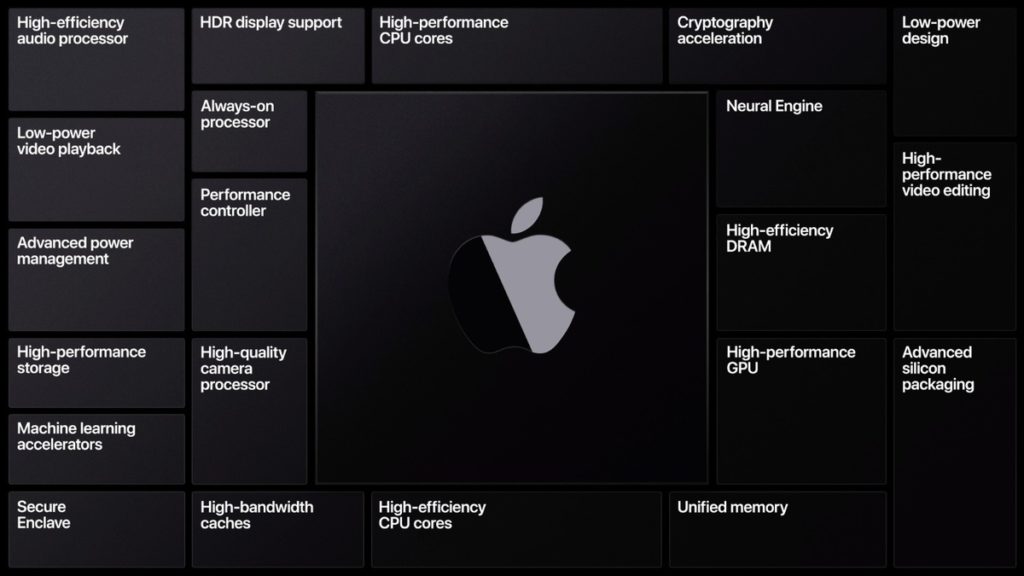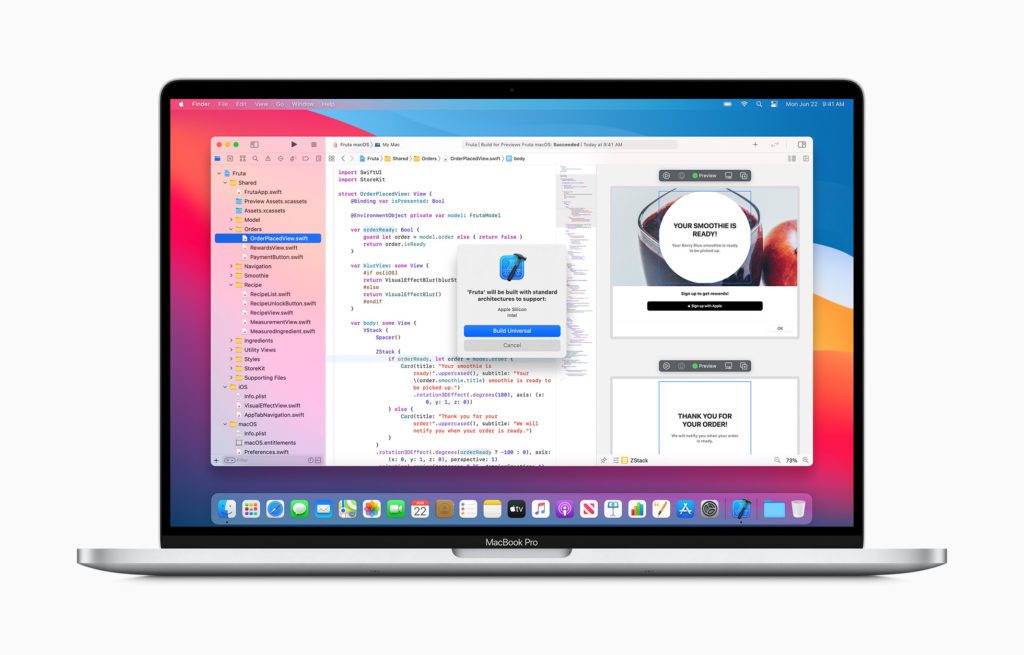
WWDC20: Apple Unveils MacOS Hardware, Apple Silicon
The Future of Developing for Apple
Apple has always insisted on quality user experiences that leverage the natural interfaces for each unique piece of hardware in their line-up. This premium user experience requires developers, and stakeholder budgets, to support operating system specific features when they want to fully engage the entire Apple ecosystem. Apple’s introduction of custom silicon for macOS at WWDC20 came with an impressive demonstration: native iOS Apps running on macOS hardware. That’s no small feat. Developing Apps that can be deployed across the entire Apple ecosystem with minimal impact on budget has long been a shared dream in the development community. That dream is finally becoming a reality.
A Brief History
When Apple first introduced the iPhone it was a truly unique piece of hardware with an operating system built from scratch to accompany it, iOS. There was a clear distinction between Apple’s desktop and mobile operating systems with one relying on traditional computer inputs and the latter providing a radical new way to interact with mobile phones through touch. As the Apple line-up grew, and the App Store was introduced, development teams started supporting three different platforms: traditional desktop, phones, and tablets. Keeping a complete app ecosystem up-to-date was costly and time-consuming.
The process for addressing those challenges changed dramatically with the introduction of Universal Apps that supported both iPhone and iPad. By providing a way for developers to address both operating systems with one codebase, while still implementing the increasingly unique iPad features, development teams supporting both platforms received a budget windfall that saved significant sums of money. They also benefited from being able to port content to a previously in-accessible platform. Universal Apps came with consumer benefits, allowing users to purchase an app once and deploy it on their phones and tablets, continuing to drive consumer spending on apps.
Apple made other changes, slowly closing the gap between user interactions on desktop and mobile. Today, tablets fully support both pen and trackpad inputs. Apple Laptops replicate touch capability with the trackpad and Touch Bar. OS X Lion introduced iOS styled UI with Launchpad, and macOS Big Sur takes that visual update much further. The march toward a more unified experience has been moving ahead, but there was still one challenge that had to be addressed: Apple used two different chipsets, Intel and ARM. That has always been a barrier to cross-platform deployment. The announcement of custom Apple silicone across their entire hardware line-up means all of their devices will now be running custom ARM processors, including hardware supported by macOS. This is the latest stage in a long trek toward a more unified deployment strategy that doesn’t compromise on the OS and hardware specific features that make each Apple product unique and powerful.

Moving Forward
Billions of apps have been developed over the years for Apple’s mobile platforms and the barriers to deploying those on additional devices are quickly disappearing. With the new ARM processors, iOS and iPadOS applications can run natively on macOS without any modification. For a more complete user experience, developers can take full advantage of the native features of each platform by implementing them directly. An example would be starting with a base iOS application, then extending it with additional functionality for each platform. For iPadOS, taking advantage of the additional screen real-estate or implementing Apple Pencil functionality could be useful features. On macOS, you can use Catalyst to take full advantage of native system interactions or implement the Touch Bar. A single Universal Application can be deployed across iOS, iPadOS, and macOS—all from one codebase.
Mobile first design trends, largely driven by the population’s increased use of mobile devices and led by Generation Z, lend themselves well to the pipeline that Apple has created. Responsive applications address core functionality on the go while scaling up to provide increased usability on larger devices with additional user interfaces. This helps provide a consistent brand experience and quality customer interactions across all digital touch-points. By its nature, this process saves you considerable time addressing new device layouts and during the iteration process, guiding your team towards a common design language that can be expressed uniformly across all devices. This creates consistency and predictability for customers.
This new ecosystem also provides an opportunity for increasing your digital reach and the size of your user base. By deploying native experiences across all devices, you maximize your availability and audience. Users buy your App once, and can download it on all of their core devices. This keeps them out of their browsers, navigating away from your app, and focused on the experience in front of them. If you really want to take advantage of Apple’s complete line-up, you can even extend your base application again to create watchOS and tvOS applications, providing maximum user reach.
Conclusion
It’s never been a better time to develop a Universal application for the Apple ecosystem. With the announcement of new Apple silicon, developers can now create a single application and deploy it across the entire Apple ecosystem with minimal effort. They can then extend that application to take full advantage of the native hardware and system interactions with each platform. This has tremendous implications for project budgets, providing huge cost savings. It also aligns nicely with modern mobile-first responsive design trends. With the introduction of Apple silicon, development teams can now support a single application across iOS, iPadOS, and macOS with one code base. They can even extend that application to watchOS and tvOS, leveraging the full Apple ecosystem across all platforms from a single source.
Get In Touch With Us
Jackrabbit Mobile is committed to empowering businesses through custom digital solutions. Interested in learning how we may enhance your users experience with your iOS app? Contact us for a consultation on how we can help.
